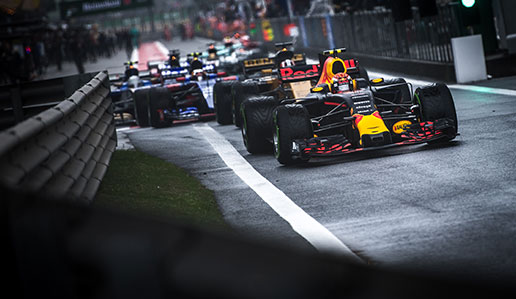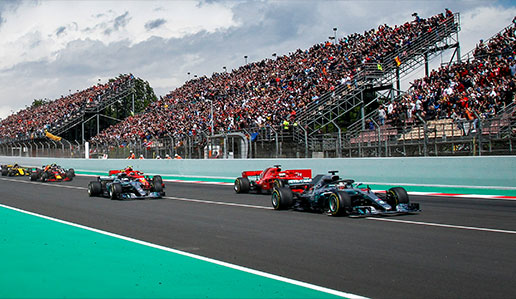F1 Grand Prix
A Formula One Grand Prix takes place over a weekend,
from Friday to Sunday.

Two Free Practice sessions of 90 minutes each. One in the morning and other in the afternoon. Besides regular drivers, third drivers (newcomers) can participate in place of the regular driver to gain experience and exposure.

One Free Practice session for 60 minutes and Qualifying session to decide grid positions. The fastest qualifier starts at the front (pole position) on the starting grid of 20 slots, and the slowest at the back
The length of the race must be 305 km (260km in Monaco GP).
The number of laps in a race is obtained by dividing 305 by the length of a lap, which differs from track to track. The Abu Dhabi Grand Prix is 55 laps.
The duration of the race cannot be more than 2 hours. If it exceeds 2 hours, the race will finish at the end of the ongoing lap. If a red flag [used when conditions are too dangerous] halts the race, the total time must not exceed 4 hours, and the full time excluding the red flag stoppage may not exceed 2 hours.
The race controller switches on the starting lights (10 red lights in 5 columns). A series of red lights flashes until a final red light comes on and goes out. When the last red light goes out, the race begins.
This is when cars come into the pit stalls (located on a pit lane) for quick maintenance, change of tyres, mechanical repairs or adjustments and other actions required during the race.
The driver who crosses the finish line first after completing a pre-determined number of laps is the winner.
At the end of the race, the drivers who finish at first, second and third positions stand on a podium and are awarded trophies. A constructor's trophy is presented to the winner's team.
The winner receives 25 points, the second-place driver get 18 points, with 15, 12, 10, 8, 6, 4, 2 and 1 points for positions from 3 to 10, respectively. One bonus point is awarded to the driver and team with the fastest lap of the race, if they finish in the top 10.